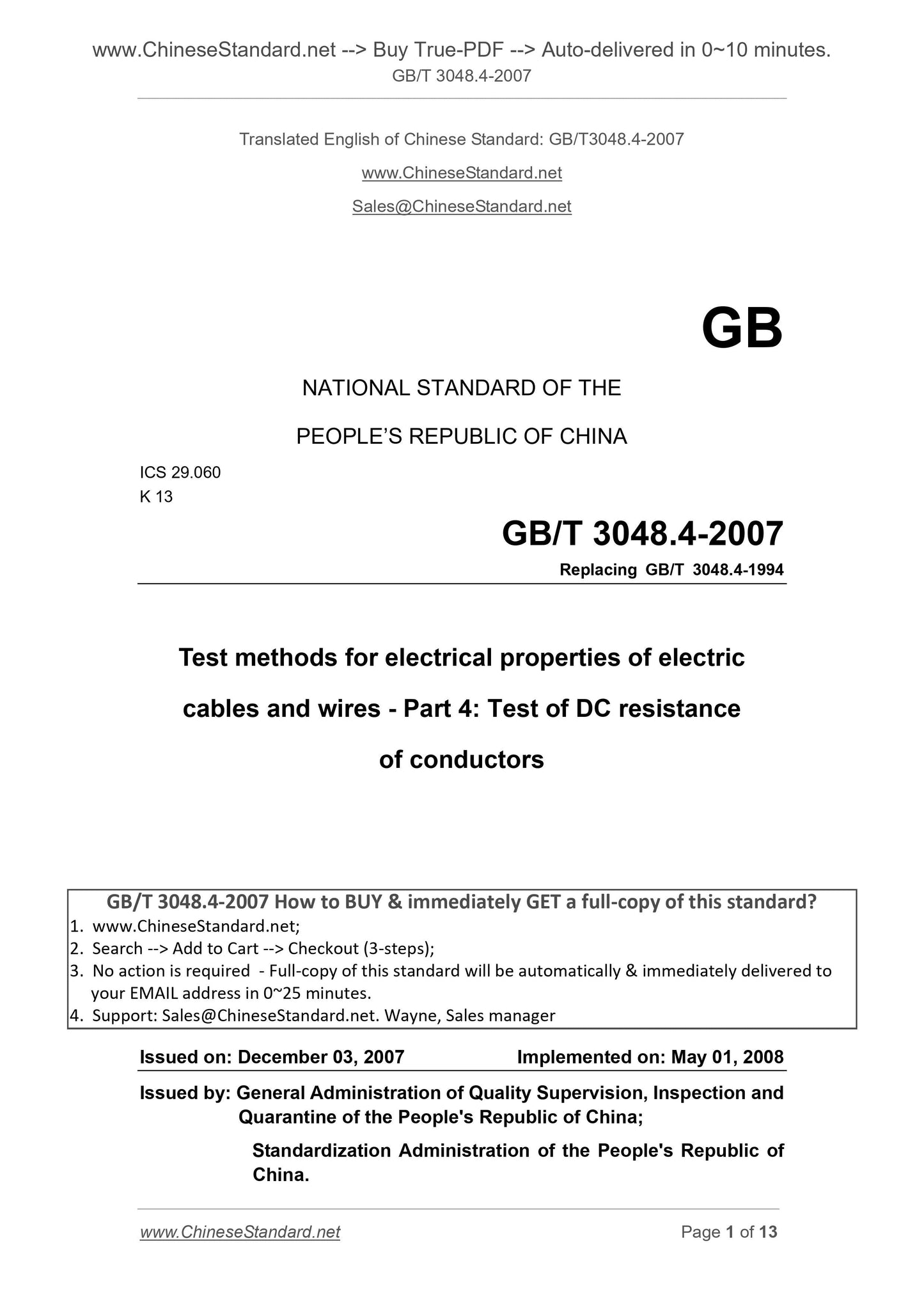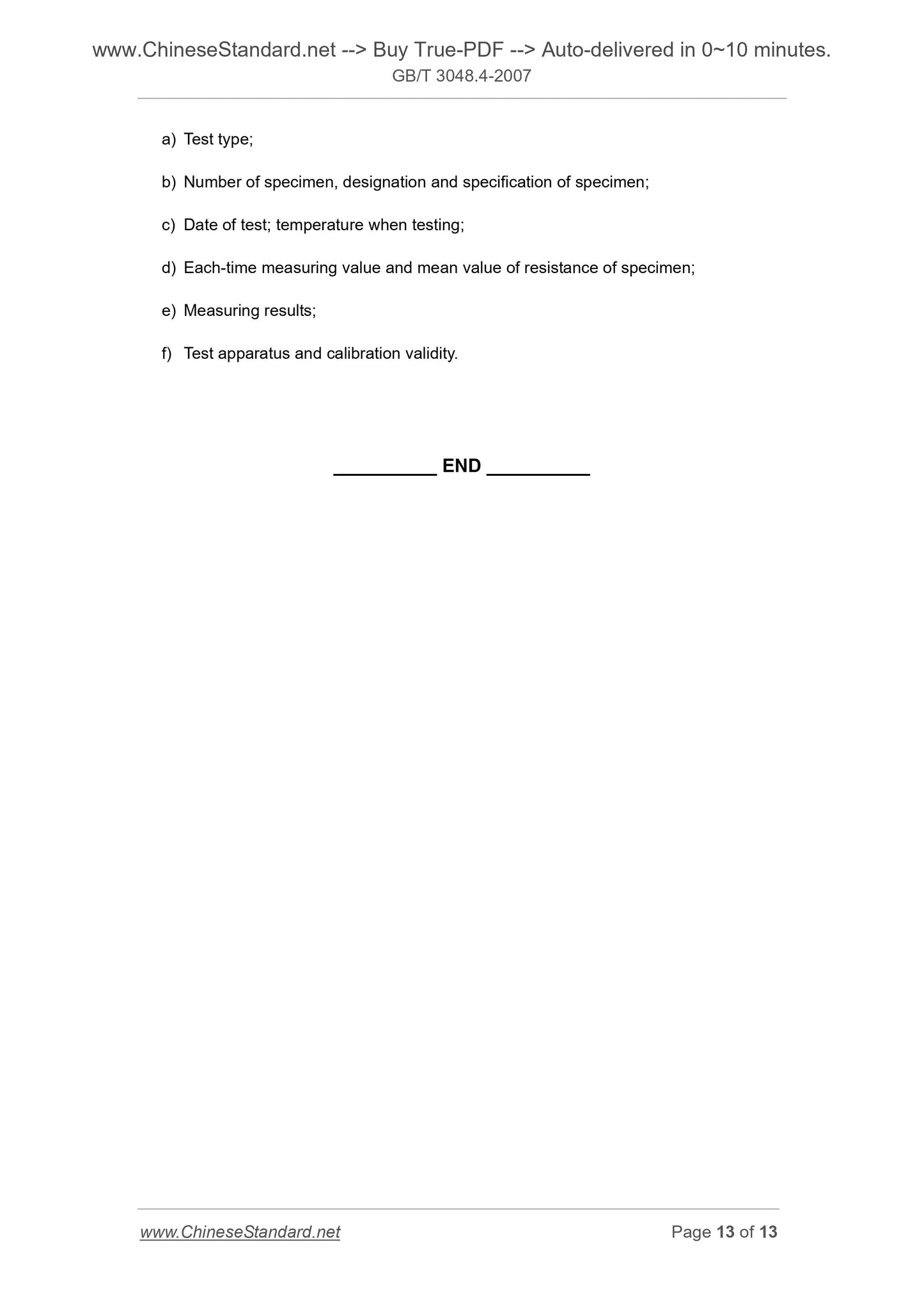1
/
of
8
www.ChineseStandard.us -- Field Test Asia Pte. Ltd.
GB/T 3048.4-2007 English PDF (GB/T3048.4-2007)
GB/T 3048.4-2007 English PDF (GB/T3048.4-2007)
Regular price
$70.00
Regular price
Sale price
$70.00
Unit price
/
per
Shipping calculated at checkout.
Couldn't load pickup availability
GB/T 3048.4-2007: Test methods for electrical properties of electric cables and wires -- Part 4: Test of DC resistance of conductors
Delivery: 9 seconds. Download (and Email) true-PDF + Invoice.Get Quotation: Click GB/T 3048.4-2007 (Self-service in 1-minute)
Newer / historical versions: GB/T 3048.4-2007
Preview True-PDF
Scope
This Standard specifies the test apparatus, specimen preparation, test procedure for testof DC resistance of conductors as well as calculation and test record.
This Standard is applicable to measure DC resistance of conductors of electric wires and
cables, the measuring range is as follows.
– Kelvin (double) bridge (2×105 ~ 99.9)Ω.
– Wheatstone (single) bridge 1Ω ~ 100Ω and above.
The test methods specified in this Standard is not applicable to measure DC resistance of
electric wires and cables which have been installed.
This Standard shall be used together with GB/T 3048.1.
Basic Data
| Standard ID | GB/T 3048.4-2007 (GB/T3048.4-2007) |
| Description (Translated English) | Test methods for electrical properties of electric cables and wires -- Part 4: Test of DC resistance of conductors |
| Sector / Industry | National Standard (Recommended) |
| Classification of Chinese Standard | K13 |
| Classification of International Standard | 29.060 |
| Word Count Estimation | 11,172 |
| Date of Issue | 2007-12-03 |
| Date of Implementation | 2008-05-01 |
| Older Standard (superseded by this standard) | GB/T 3048.4-1994 |
| Quoted Standard | GB/T 3048.1 |
| Regulation (derived from) | Announcement of Newly Approved National Standards No. 12 of 2007 (total 112) |
| Issuing agency(ies) | General Administration of Quality Supervision, Inspection and Quarantine of the People's Republic of China, Standardization Administration of the People's Republic of China |
| Summary | This standard specifies the DC resistance of conductors of test equipment, Specimen preparation, test procedures, test results and calculations and test records. The test method specified in this section for measuring the DC resistance of the conductor wire and cable, the measurement range is: double bridge: (2 �� 10 ^ -5 ~ 99. 9) ��, Wheatstone bridge |
Share















